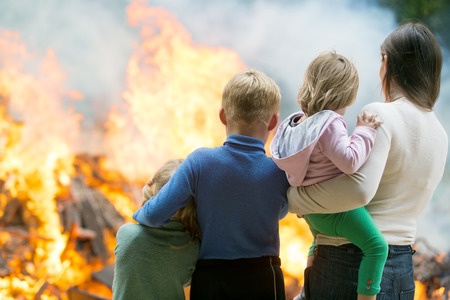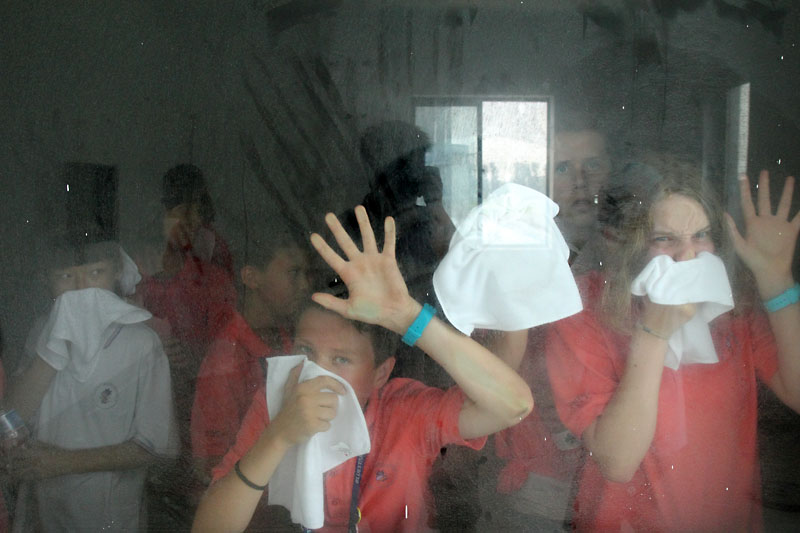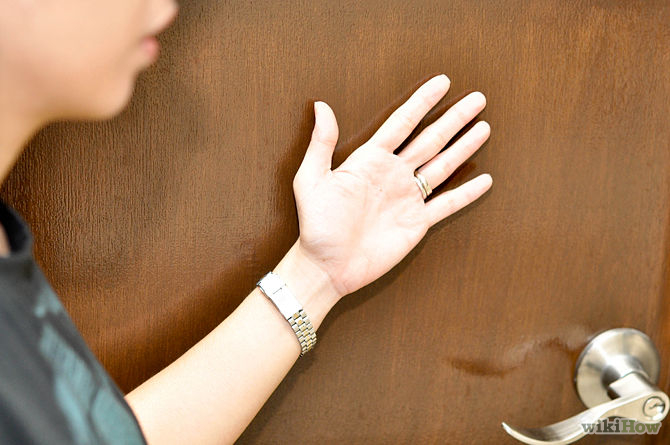
Fires claim thousands of lives every year, and many people die because they either became incapacitated or didn’t know how to escape. The good news is that there are some simple things that all of us can do in order to maximize our chances of escaping a burning building alive. Let’s take a look at a few things to think about in order to avoid panicking, getting disoriented and becoming an unnecessary victim.

Situational Awareness
The first and foremost thing to learn about your home, office or building is where you are in relation to fire escapes. These can be anything from windows to exits that have fire doors and non-combustible material inside. You also want to know how to read evacuation maps that are now required to be posted in public buildings. If they are confusing to follow, try and physically orient yourself by walking around your floor and exploring the layout of the building. You should also become aware of at least two escape routes in case one of them is obstructed during a fire.
You also want to know your location within a building as you are making your way to an escape. This will be helpful if you get trapped and need to relay information to dispatchers or rescuers. Be as specific as possible, and relay information such as the floor or room number and its general location within the building. Telling rescuers that you’re in the third floor bathroom is not as specific or helpful as telling them that you are in the third floor bathroom in the northeast corner of the building.
Know Where Extinguishers Are
Many people die in fires because of the smoke and toxic gases that are produced during the combustion of chemically-laden materials. Poorly ventilated buildings will trap smoke and gases that are produced by otherwise small fires. Knowing where the nearest fire extinguishers as well as hose lines are in relation to your position can help you to quickly put out small fires and escape. Furthermore, extinguishers can be used to temporarily cut a path of egress in raging fires as well. They can be just what you need to fight your way through flames to a nearby exit.

Stay Low
This time-honored rule still applies today. Flames, heat and smoke tend to rise during the combustion process. While it is only a matter of time before these things drop to floor level and envelop entire rooms, staying low and crawling out can help you to make an escape before this happens in many situations. If you can’t escape, try and crawl to a safe room or fire escape where the chances of encountering toxic smoke is not as great.

Wet Cloth
Using a damp cloth to cover your nose and mouth can help to reduce the amount of toxic gases and smoke produced by fires. It can also help to reduce the temperature of the air that is being inhaled as well. This can help to prevent burning, irritation and the inflammation of airways while minimizing the harm that is caused by smoke inhalation. A wet cloth can also be stuffed through gaps around doors in order to slow the spread of smoke into a room. If possible, you can also cover vents with cloth, paper or tape in order to keep smoke out as well.

Check Doors Before Opening
Do a quick check of closed doors for the presence of heat. This will be easy to determine as the material as well as the handles will be hot to the touch. Never open a door that may be containing a fire on the other side. Doing so can cause an infusion of oxygen to rush between rooms and cause the fire to flare up and rapidly expand. If the door is hot, proceed to another exit or room that is not yet affected by the fire.

Drill and Rehearse
Take fire drills seriously. Consider potential barriers or bottlenecks during the evacuation that may pose a hazard in a real emergency. Run through various scenarios in your mind and consider how you may react under different situations. The more that you can memorize the layout of your home or building as well as what you will can do under the circumstances will go a long way with respect to keeping you calm and focused during a real fire.
Always be prepared for the worst and have plans in place to address these concerns. Remember that sprinklers may fail, alarms may not go off, emergency lights may not go on and you may need to feel your way around a room instead of relying on sight. Follow these steps and consider other options that will help you to escape or shelter in a safe area until you can be rescued. Remember that the more you plan now can give you more choices during a fire later.















